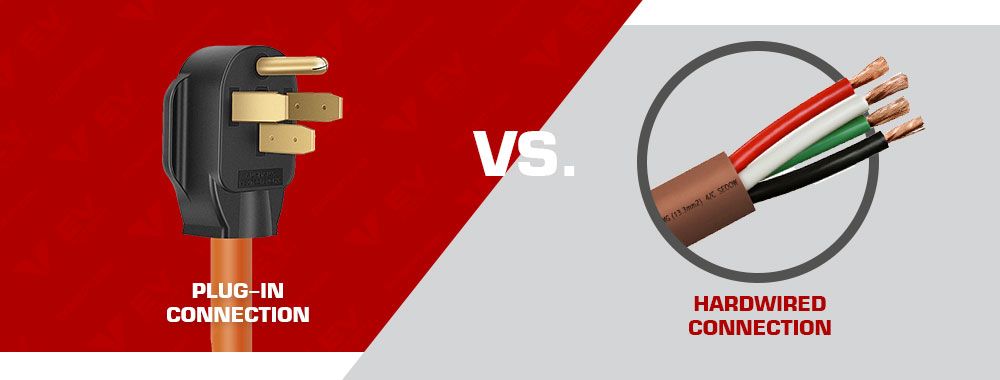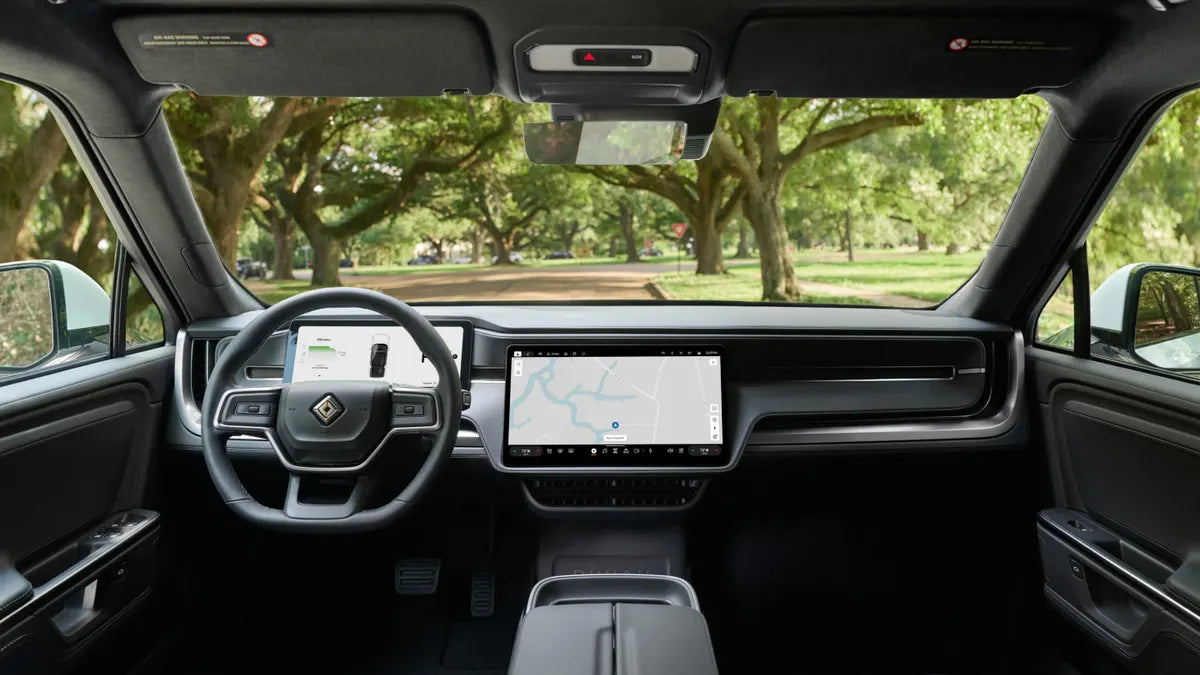Da die Zahl der Elektrofahrzeuge (EV) steigt, entscheiden sich immer mehr Hausbesitzer langfristig für die Installation von Ladegeräten der Stufe 2. Eine wichtige Entscheidung ist, ob Sie Ihr EV-Ladegerät über eine NEMA 14-50-Steckdose mit Strom versorgen oder sich für eine festverdrahtete Installation entscheiden. Beide Methoden liefern zwar die gleiche Spannung und Stromstärke (normalerweise 240 V/40–50 A), unterscheiden sich jedoch erheblich in Bezug auf Sicherheit, Kosten, Flexibilität, Einhaltung von Vorschriften und Leistung.
In diesem Artikel vergleichen wir diese beiden Installationsmethoden und helfen Ihnen herauszufinden, welche für Ihre Ladeanforderungen besser geeignet ist.
1. Was ist eine NEMA 14-50-Steckdose?
Die NEMA 14-50 ist eine Hochleistungssteckdose mit 240 Volt, die traditionell für Geräte wie Wohnmobile, Elektroherde und neuerdings auch für das Laden von Elektrofahrzeugen verwendet wird. Sie bietet:
-
4-poliges Design (zwei stromführende Leiter, ein neutraler Leiter, ein Erdleiter)
-
50 Ampere Nennleistung
-
Kompatibilität mit tragbaren EV-Ladegeräten mit einem 14-50-Stecker
Durch die Installation einer NEMA 14-50-Steckdose können Sie Ihr Ladegerät nach Belieben anschließen und trennen. Dies ist ideal für alle, die Flexibilität suchen, oder für Mieter, die möglicherweise umziehen.

2. Was ist ein festverdrahtetes EV-Ladegerät?
Ein festverdrahtetes EV-Ladegerät ist dauerhaft mit dem Stromnetz Ihres Hauses verbunden. Bei dieser Installationsmethode wird das Stromkabel direkt in das Ladegerät geführt, ohne dass Stecker oder Steckdose erforderlich sind. Die EVSE (Electric Vehicle Supply Equipment) ist fest installiert und bietet eine dauerhafte Ladelösung.

3. Wichtiger Vergleich: NEMA 14-50 vs. festverdrahtet
Nachfolgend finden Sie eine Vergleichstabelle mit den wichtigsten zu berücksichtigenden Faktoren:
| Besonderheit | NEMA 14-50-Steckdose | Festverdrahtete Installation |
|---|---|---|
| Installationstyp | Plug-in | Direktverdrahtung |
| Code-Konformität (NEC) | Bei Neuinstallationen oft nicht empfohlen | Von NEC für Lasten >40 A empfohlen |
| Sicherheit und Hitzerisiko | Mäßig (Steckdosenverschleiß im Laufe der Zeit) | Niedriger (weniger Verbindungspunkte) |
| Installationskosten | Im Voraus niedriger | Höher (erfordert Elektriker) |
| Flexibilität | Hoch (tragbar/abnehmbar) | Fest (nicht leicht zu bewegen) |
| Haltbarkeit | Die Steckdose kann sich mit den Zyklen verschlechtern | Länger anhaltende Verbindung |
| Wetterfestigkeit | Begrenzt (außer beiliegender Karton) | Besser abgedichtet |
| UL-Listung | Nur wenn Steckdose + Ladegerät aufgeführt sind | Ladegerät in der Regel UL-gelistet |
4. Sicherheit und Brandgefahr
Beide Methoden sind zwar sicher zu installieren, allerdings birgt die NEMA 14-50-Steckdose ein höheres Brandrisiko, wenn sie unsachgemäß installiert oder mit minderwertigen Komponenten kombiniert wird. Wiederholtes Ein- und Ausstecken kann mit der Zeit zu Folgendem führen:
-
Lose Verbindungen
-
Lichtbogenbildung
-
Hitzestau
-
Schmelzen oder Feuer
Der National Electrical Code (NEC) Ausgabe 2023 empfiehlt dringend eine Festverdrahtung für Dauerlasten über 40 Ampere , was die meisten EV-Ladegeräte mit 9,6 kW oder mehr einschließt.
🔥 Reale Probleme mit NEMA 14-50:
-
Billige Steckdosen aus Aluminium oder dünnem Messing überhitzen bei einer Dauerbelastung von 40 A.
-
Mit dem falschen Drehmoment angezogene Klemmen lösen sich mit der Zeit und erhöhen den Widerstand.
-
Eindringende Feuchtigkeit kann insbesondere in Garagen zu Korrosion führen.
5. Einhaltung des Codes und lokaler Vorschriften
Ab NEC 2023:
-
In einigen Ländern sind festverdrahtete EV-Ladegeräte für Dauerlasten von >40 A vorgeschrieben .
-
Viele lokale Vorschriften verbieten zunehmend neue 14-50-Installationen zum Laden von Elektrofahrzeugen, sofern sie nicht nur für 32 A ausgelegt sind.
Durch die Festverdrahtung wird sichergestellt, dass Inspektionen und Genehmigungen eingehalten werden, während Steckdosen, die von nicht lizenzierten Personen installiert werden, möglicherweise nicht kontrolliert werden.
6. Installations- und Kostenunterschiede
NEMA 14-50-Steckdose
-
Kosten: 300–800 $ (Materialien + Elektriker)
-
Sie können es selbst machen, wenn es erlaubt ist, aber das birgt Risiken
-
Möglicherweise ist ein FI-Schutzschalter gemäß Vorschrift erforderlich
Festverdrahtet
-
Kosten: 600–1.200 USD+
-
Erfordert einen zugelassenen Elektriker
-
Beinhaltet normalerweise Genehmigung und Inspektion
Während die Plug-in-Option günstiger ist , bietet die Festverdrahtung langfristige Vorteile hinsichtlich Sicherheit und Konformität, insbesondere in Umgebungen mit hoher Stromstärke.

7. Wartung und Langlebigkeit
NEMA 14-50-Steckdosen sind mechanische Verbindungen, die mit der Zeit nachlassen:
-
Die Sockelspannung lässt nach
-
Kontakte lösen sich
-
Kohlenstoff baut sich durch wiederholte Zyklen auf
Festverdrahtete Einheiten hingegen sind versiegelt und stationär , wodurch die Anzahl der Fehlerquellen reduziert wird. Da sie weniger bewegliche Teile aufweisen, halten festverdrahtete EVSEs in der Regel länger als Plug-in-Ladegeräte.
8. Anwendungsfälle: Wann sollte man sich für welchen entscheiden?
Wählen Sie NEMA 14-50, wenn:
-
Sie sind Mieter und möchten das Ladegerät mitnehmen
-
Sie verwenden ein tragbares Ladegerät der Stufe 2
-
Sie benötigen Flexibilität, um zwischen Ladegeräten wechseln zu können

Wählen Sie „Festverdrahtet“, wenn:
-
Sie besitzen Ihr Eigenheim und möchten eine dauerhafte, gesetzeskonforme Einrichtung
-
Ihr Ladegerät ist für 40 A oder mehr ausgelegt
-
Sie möchten minimalen Wartungsaufwand und maximale Sicherheit
9. Branchentrends und Herstellerwechsel
Mehrere führende Hersteller von Elektrofahrzeugen wie ChargePoint, Wallbox und Emporia liefern ihre Ladegeräte mit höherer Kapazität mittlerweile nur noch festverdrahtet aus. Auch der Wall Connector von Tesla ist für die Heiminstallation festverdrahtet , um den NEC-Richtlinien zu entsprechen.
10. Endgültiges Urteil: Sicherheit geht vor
NEMA 14-50-Steckdosen bieten zwar kurzfristigen Komfort und Kosteneinsparungen, bringen aber langfristig Bedenken hinsichtlich Zuverlässigkeit und Sicherheit mit sich – insbesondere bei leistungsstarken, kontinuierlichen Ladestationen für Elektrofahrzeuge. Wenn Sie langfristig laden möchten, ist eine Festverdrahtung die bessere Wahl .
Es bietet nicht nur eine sauberere und sicherere Installation , sondern entspricht auch den sich entwickelnden elektrischen Vorschriften und beseitigt die steckerbezogenen Probleme, die viele NEMA 14-50-Setups plagen
Zeit.
🔧 Profi-Tipp für Hausbesitzer
Wenn Sie unbedingt eine NEMA 14-50-Steckdose verwenden möchten:
-
Verwenden Sie immer UL-gelistete, kupferbasierte Steckdosen
-
Installieren Sie einen FI-Schutzschalter
-
Ziehen Sie die Klemmen gemäß den Herstellerangaben an.
-
Überprüfen Sie die Steckdose regelmäßig auf Verfärbungen oder Hitzezeichen
Empfohlene Lektüre: Beste Steckdosentypen zum Laden von Elektrofahrzeugen: NEMA 5-15, 6-20, 14-50








Aktie:
Warum billige NEMA 14-50-Steckdosen eine Brandgefahr für das Laden von Elektrofahrzeugen darstellen – und wie Sie die richtige auswählen
Staatliche Rabatte für Elektrofahrzeuge und Ladeanreize nach Kürzungen der Bundeskredite